LaDIA Fellows Program
About | Past Fellows | How to Apply
2015 Fellows
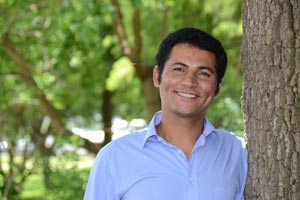 Aly Mousaad Aly
Aly Mousaad Aly
assistant professor
Department of Civil and Environmental Engineering
Louisiana State University
Now Working On:
My research focuses on building more resilient coastal infrastructure. My goal is to reduce loss of life and the huge cost of rebuilding after storms, while taking into account the reality of limited resources.
Coastal Focus:
Climate change could make monster hurricanes more frequent than before. Given the need to build more resilient communities, my research focuses on how to retrofit existing infrastructure and build new structures that can withstand high winds.
Research Overview:
Hurricanes have caused catastrophic losses of life and property in coastal Louisiana and the southern US. My team’s research aims to create structural designs that will better protect the people and cultures of this region. To do this, our research looks at how wind affects the built environment: things like homes, offshore structures, bridges, roads, and wind turbines. If we better understand how wind affects these structures, we can learn how to build them stronger. This will help homeowners, local governments, and insurance companies deal more effectively with storms. For example, our research may help officials fine tune design codes, or it may give coastal residents options for making their dwellings more storm resistant.
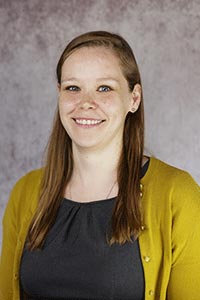 Katie Costigan
Katie Costigan
assistant professor
School of Geoscience
University of Louisiana at Lafayette
Now Working On:
My current research is focusing on understanding river bed shapes—why and how rivers dry down and wet up.
Coastal Focus:
My research is focused on small headwater streams, which are major contributors of sediment and water to coastal environments. Although I don’t study coastal areas, I do study the rivers that feed them. Without a sound understanding of headwater streams, coastal environments will remain particularly endangered systems.
Research Overview:
I primary study intermittent rivers, or those rivers that dry at some place and at some point in time. Today we don’t know enough about how or what causes rivers to dry up. My research aims to fill this data gap so that we can better manage and predict what may happen in the future when we’re predicting whether more rivers will become intermittent. If more rivers become intermittent, it is likely that there will be even less sediment reaching the coastal areas, which may exacerbate current issues the coast is facing.
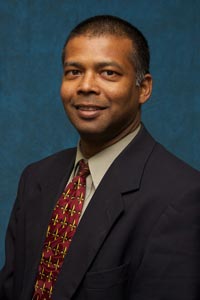 Malay Ghose-Hajra
Malay Ghose-Hajra
assistant professor
Department of Civil and Environmental Engineering
University of New Orleans
Now Working On:
I’m developing a model that can predict future land loss and land creation in south Louisiana.
Coastal Focus:
Coastal property development, sea level rise, loss of barrier islands, and land subsidence have resulted in massive wetland loss and water quality degradation throughout south Louisiana. In fact, the region is losing a football field of land every hour. My research focuses on understanding how land loss happens, including the role played by natural resources in maintaining the health of the coastline. To this end, our research team is developing a numerical model that will predict where coastal land is expected to erode and build in the coming years.
Research Overview:
We depend on our coasts, for jobs, for natural resources, for natural resources, and for recreational enjoyment. If we want our coasts to thrive, we must understand how our human systems can better mesh with the coast’s natural processes. Since we live in an ever-changing, complex coastal environment, my research examines a range of factors. For example, I study how different soil types, different salinity ranges, and varying flows of water all create conditions either for land erosion or land building. My research also studies the effects of Mississippi river sediment use on new land building in coastal Louisiana and its effects on oyster farming and the fishing industry. The mathematical model that I am developing will help engineers and scientists plan and design new coastal restoration projects.
 Chris Green
Chris Green
associate professor
Aquaculture Research Station
LSU AgCenter
Now Working On:
Our lab is starting a project this summer where we will develop a test to measure hormone levels in fish by collecting the mucus on the skin.
Coastal Focus:
Most of our research works on fish and shellfish physiology, which is the study of how an organism or its body parts function. Many of our projects examine how fish adjust to changes in temperature, salinity, and other environmental variables. One large component of our work is on fish reproduction and connections with environmental health. Within our coastal marshes the salinity can change often, so our work in this area seeks to determine how salinity influences many factors related to fish growth, stress and survival. This is exceptionally important when it comes to current and potential future changes to our coast from saltwater intrusion and increasing freshwater inputs.
Research Overview:
Our lab makes connections between things inside a fish’s body, such as hormones, organs, and enzymes to determine how well that fish is able to live, grow, and reproduce. Our work on toxicology has examined the implications of small amounts of oil on fish reproduction and the fitness of the resulting young. In a related project, we figured out how fast certain fish embryos grow inside the egg given differences in water salinity and temperature. This research also found that small modifications in incubation temperature and water altered the time these eggs hatched. The incubation conditions play a big role in how large larval fish are when they hatch, which can create different levels of success early in life.
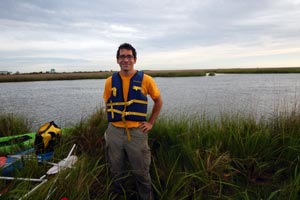 Giulio Mariotti
Giulio Mariotti
assistant professor
Department of Oceanography and Coastal Science
Louisiana State University
Now Working On:
I am very excited to be studying how sedimentary processes in Louisiana wetlands differ from those in New England wetlands. Why this comparison? Sometimes you need to look at different systems to understand what is going on in your backyard.
Coastal Focus:
I study how wetlands are formed and destroyed by natural and human-influenced processes. Using mathematical models I make predictions of how coastal environments will change in the future. These predictions can help policy-makers select coastal management strategies.
Research Overview:
Modern coastlines are affected and threatened by both natural factors, such as sea level rise and storms, and by human activities, such as modifications of the sediment load carried by rivers. Understanding the mechanics that shape coastal environments over time is important because, in order to help them thrive, we need to be able to predict how coastal areas will evolve. Understanding these changes will also help us evaluate the effects of coastal management actions, such diversions of river flow and construction of artificial marshes. To make my predictions, I use mathematical models. In order to increase the accuracy and reliability of my predictions, I work on advancing knowledge of how sediments are eroded, transported and deposited by tides, winds and waves. I also collaborate with biochemists and ecologists to reveal how sedimentary processes are affected by biological factors, such as plants and microbial slime.
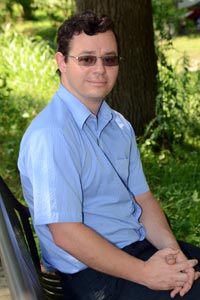 Brian Marks
Brian Marks
assistant professor
Department of Geography and Anthropology
Louisiana State University
Now Working On:
I’m excited about mapping where shrimpers fish in the Gulf of Mexico and how and why that changes over time and amongst them.
Coastal Focus:
I talk to fishermen about how they make a living, their relationships, and how those things change. I compare those experiences with shrimpers overseas and to larger processes like global trade and commodity prices to understand how people here and there might cooperate instead of conflict with each other.
Research Overview:
I’m a geographer, more specifically a political and economic geographer with interests in coastal areas and river deltas, fisheries and aquaculture, and the livelihoods of coastal people. My work is mainly in the Gulf of Mexico and the Mekong Delta and concerns the relationship of shrimp producers in those places to processes of globalization, economic transitions and environmental change. I also have research interests in environmental history, in political economy, and in geographic education.
The intellectual merit of my work lies in its contribution to debates over globalization and how it manifests in local contexts and specific circuits of economic production and reproduction. My work in Louisiana argues that the costs of the cost-price squeeze on shrimp fishing families are materialized not principally in the sphere of economic production, but in the family itself, the circuits of social reproduction. In essence, under conditions of economic crisis the boat eats first from the family table. This economically invisible transition keeps boats running at the deficit of the household in the short term, but destroys the long term reproduction of shrimpers as their children leave the fishery and inter-generational transfer breaks down.
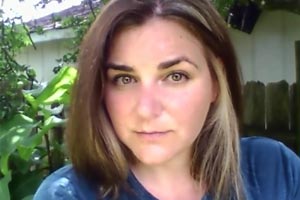 Candace May
Candace May
assistant professor
Department of Sociology and Anthropology
University of Louisiana at Lafayette
Now Working On:
I am currently studying the differential responses and adaptive capacities of communities to social, environmental, and economic disruptions within and across three rural, racially and economically diverse coastal parishes.
Coastal Focus:
I study how communities are affected by and respond to social, environmental, and economic disruptions to social relationships, livelihoods, and access to resources. I work to help construct better policies and more supportive programs by identifying community needs for capacity building, but also learning from the innovative ways communities organize to solve local problems.
Research Overview:
My research focuses on how communities are affected by and respond to social, economic, and environmental changes and how groups can better participate in the policy processes that affect their lives and livelihoods. This research is relevant to coastal regions in Louisiana, as well as across the United States and internationally. Coastal populations are highly vulnerable to the effects of climate change – sea level rise, coastal erosion, and increased risk of flooding and extreme weather events – and market fluctuations that effect natural resource dependent livelihoods, such as fishing or the energy sector. One response to these disruptions is people move to seek safety from storms or better economic opportunities. As people move into and out of communities, the social fabric and distribution of resources also change. Places that easily handled past disruptions become more fragile, while other locales become more resilient. Effective policy and community preparation depend on information about how communities differ in how they are affected by, as well as their abilities to respond to social, economic, and environmental changes. The overall end result that I strive for in my research is practical knowledge that is useful for communities, speaks to policy, and adds to the general knowledge of my discipline, Rural and Natural Resources Sociology.
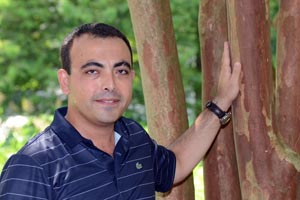 Celalettin Emre Ozdemir
Celalettin Emre Ozdemir
assistant professor
Department of Civil and Environmental Engineering
Louisiana State University
Now Working On:
I am trying to evaluate the survivability limits of a marsh patch under wave erosion at the early colonization of marsh systems.
Coastal Focus:
I study the details of marsh edge erosion. Marsh systems form our defense fronts against sea level rise, subsidence, and frequently recurring storms. Understanding the erosion along the marsh edges shall provide scientific information on how to mitigate coastline erosion and also the fate of marshes in the long term.
Research Overview:
My research is on erosion in marshes at the smallest scale. Creation of marsh systems is an ecologically functioning mitigation strategy against alarmingly high rates of land loss problem in Coastal Louisiana, Gulf Coast, and other threatened coast lines in the globe. To forecast the response of marsh systems against sea level rise, subsidence, and high-energy storms, developing reliable numerical tools is crucial. The processes that are involved in marsh erosion is highly complicated and necessitates detailed evaluation. I study the smallest scale erosion processes in wetlands on the centimeter scale and try to implement my findings in larger scales which are on the order of kilometers and decades of kilometers.
Inclusion of small scale erosion processes will lay out a foundation to develop physically based marsh erosion models in larger scales that will help local and regional authorities make informed decision-making. I am trying to collaborate with scientists to understand and estimate the effect of marshes on coast line evolution. I also teach the physics of coastal sediment transport.
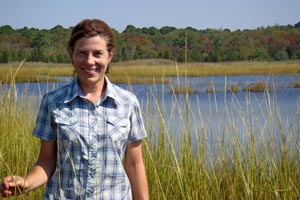 Tracy Quirk
Tracy Quirk
assistant professor
Department of Oceanography and Coastal Science
Louisiana State University
Now Working On:
I am currently conducting experiments to examine how root and rhizome (underground stems) growth in wetland plants are affected by environmental conditions such as flooding, salinity, and nutrients, and, in turn, how root behavior and growth form influence soil characteristics.
Coastal Focus:
I study how coastal wetland plants function within their environment. Flooding, sediment and nutrient availability, and salinity can have a large effect on which wetland plants survive and how they grow. My research involves understanding how plant species respond to these environmental factors and how plant growth characteristics influence the marsh environment. This in turn, allows me predict how environmental changes, restoration projects, and other human activities will affect the wetland ecosystem.
Research Overview:
My research helps predict how wetlands are responding to climate change. It also offers options for evaluating the success of wetland restoration projects. To provide this support to decision makers, I am working to understand how plants interact with their environment and how climate and environmental conditions influence the growth and morphology of individual species. Differences in growth rate and form may have large impacts on soil structure and nutrient and carbon cycling in wetlands. Some of my research includes examining how plants and microbes contribute to nutrient and carbon cycling in natural, restored and created wetland ecosystems. I am also interested in how humans have altered the structure and function of wetlands and whether restored systems function similarly to natural ones. This research is helpful to coastal managers in need of understanding environmental constraints of coastal systems and the value of restoration as a management action.
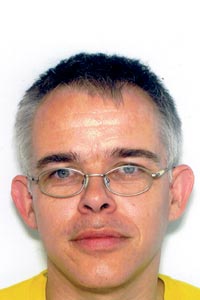 Illya Tietzel
Illya Tietzel
associate professor
Department of Natural Sciences
Southern University New Orleans
Now Working On:
A new aspect of my research is studying a newly discovered microbe that breaks down oil. I’m examining how this microbe interacts with other microbes, shrimp and fish. This will help determine the unexpected consequences of oil spills, such as the Deepwater Horizon oil spill.
Coastal Focus:
The public and decision makers want a full understanding of the ecological consequences of major oil spills such as the Deepwater Horizon oil spill of 2010. I am studying a microbe (Alcanivorax borkumensis) that is able to break down oil and was found in the aftermath of the oil spill. It was found on the beaches of the Gulf coast and also in the waters of the Gulf of Mexico.The coastal shrimp and fish share their living space (natural habitat) with this microbe and are therefore exposed it. Several question arise. What are the ecological consequences of having the microbe share habitat with coastal fish and shrimp? Are the microbes ingested by coastal fish and shrimp? Are the microbes harmful, or are they beneficial? Is this microbe becoming a natural part of Gulf of Mexico microbial communities?
Research Overview:
After the Deepwater Horizon oil spill of 2010, I began exploring the oil eating microbe, Alcanivorax borkumensis. I sponsor undergraduates at Southern University, New Orleans to conduct research on this microbe, thereby encouraging local residents mostly impacted by the oil spill to have a role in examining impacts. My students use the facilities of the Louisiana Universities Marine Consortium near Chauvin, LA. So far, we’ve found the oil spill microbe in some fish. This could mean this microbe is colonizing the digestive tract of fish with unknown positive or negative effects. Our research continues, with a focus on the interaction of the oil spill microbe and other microbes the digestive tract as well the colonization of shrimp by this microbe. (this last part still isn’t clear). The coastal ecosystem not only benefits local plants and animals, but also humans. For example, we have used the rich natural resources of fish and shrimp to generate a multi-million dollar seafood industry, as well as other benefits. My research will help answer questions about how to safeguard the long-term health of this ecosystem.
 Wei Xu
Wei Xu
assistant professor
Aquaculture Research Station
LSU AgCenter
Now Working On:
I am interested in discovering how oysters respond to environmental stressors, such as temperature, salinity, and pH in the Gulf of Mexico.
Coastal Focus:
My research focuses on understanding how adult and young oysters defend themselves when they experience environmental changes. I’m particularly interested in identifying how environmental stressors change the DNA in certain oyster cells. If we can better understand these changes, we may be able to encourage the selective breeding of oysters that will better withstand the conditions now found in the Gulf.
Research Overview:
The most economically important bivalve species in the Gulf of Mexico, the Eastern Oyster is experiencing a significant decrease in productivity. This has harmed the local economy in the Gulf of Mexico area, especially in the State of Louisiana, where the oyster industry is a staple of agriculture. Some scientists think the decline of the Eastern Oyster is being caused by environmental factors, such as degradation of habitant, frequent changes of salinity, and disease-causing microbes. However, it remains unclear how exactly these environmental changes damage the oysters. Answering this question, will help create a sustainable oyster industry in Louisiana.
I’m investigating how oysters respond to environmental stresses at the molecular level using DNA technology called next-generation sequencing. This is an area of research that not many are looking at in Aquaculture, yet it has important implications for the health of the species. By learning which genes help oysters stay healthy with stresses, my research can support selective breeding of new strains of Eastern Oysters with high resistance to extreme environmental conditions. In the short term, my research could be used to improve oyster farming and conditions for live oyster storage.
